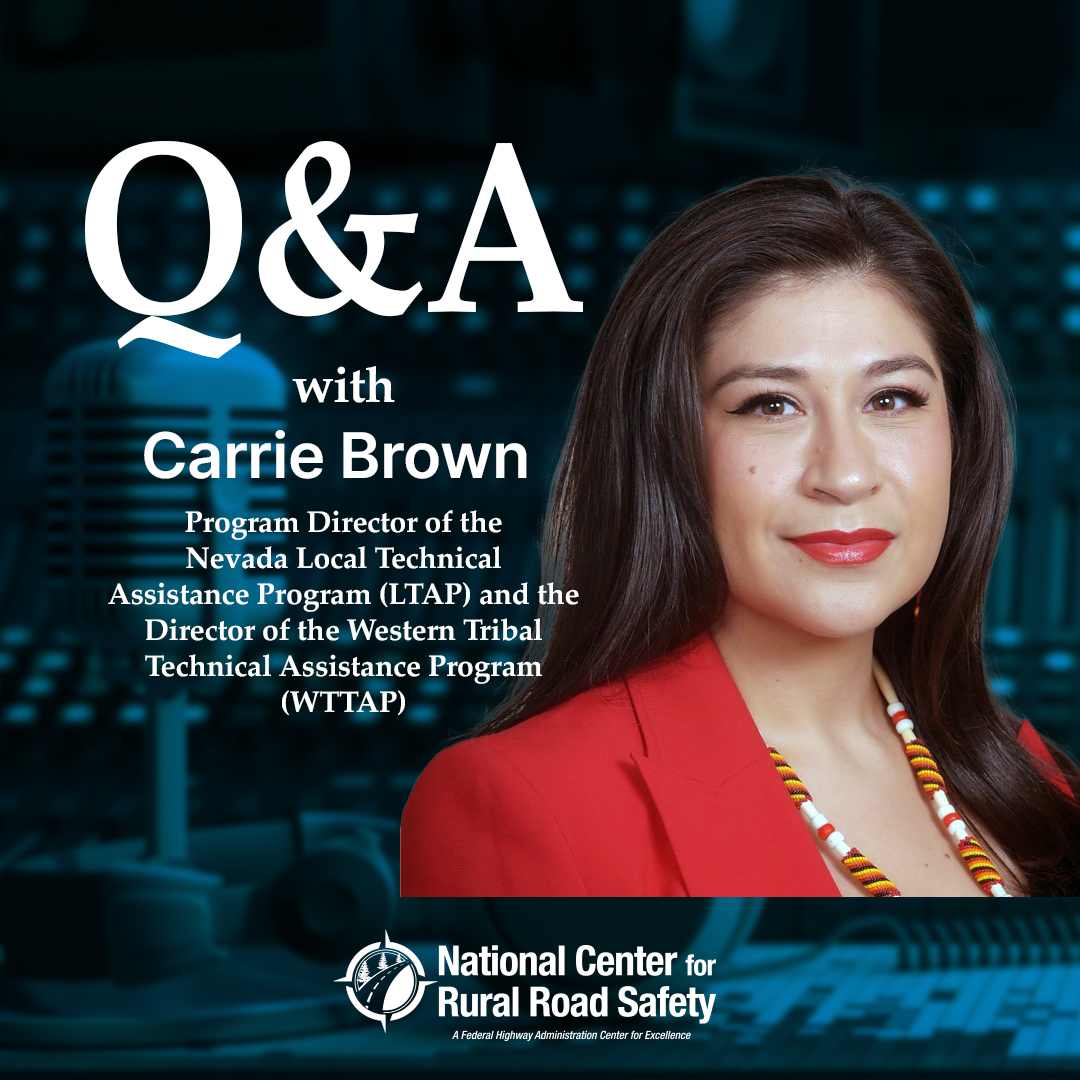Carrie Brown is the program manager for Nevada Local Technical Assistance Program (LTAP) and the director of the Western Tribal Technical Assistance Program (WTTAP). In this conversation, Kevin talks with Carrie about the local and Tribal road system experience and innovations that have significantly improved data collection. The conversation also touches on the cultural-historical impact of governmental partnerships on the Tribal approach to roadway safety.
Listen to the full episode and access resources here: https://ruralsafetycenter.org/home-safely-podcast/#cbrown
Q&A
Q: What are some of the biggest roadway safety challenges in rural and Tribal areas in Nevada?
A: One of our biggest challenges is remoteness. Because our communities are so spread out, it’s hard to stretch our funding to cover all the needs we have. Reliable internet and cell service are often unavailable, which not only makes online training difficult but also delays emergency response after crashes. Sometimes help can’t reach people within that golden hour. On top of that, our extreme desert weather—hot summers and freezing winters—really impacts road conditions and infrastructure integrity.
Q: How does tourism affect roadway safety in Nevada?
A: Tourism brings in major challenges. Events like Burning Man drive thousands of visitors through rural areas like Pyramid Lake Reservation, where we have narrow two-lane highways. Many of those drivers aren’t familiar with our terrain or how to safely pass on those roads. During these events, traffic can jump from about 5,000 drivers to 60,000 in just a week. That huge surge increases crash risks and strains emergency services that are already limited in such remote regions.
Q: What makes roadway safety on Tribal lands different from rural areas in general?
A: Tribal lands face added challenges because of jurisdiction and sovereignty. Sometimes state agencies stop maintaining roads that enter Tribal land, even if it’s still a state highway, and Tribes can’t step in because they don’t own the road. Tribes are sovereign nations, so we have a government-to-government relationship with the federal government, not the state. That can be both a benefit and a barrier. It gives us direct access to federal help, but without agreements like memorandums of understanding (MOUs), we can be left on our own in emergencies. We really rely on partnerships, but there’s still a misconception that all Tribes have casinos or big resources—which just isn’t true.
Q: How do Tribal cultures approach roadway safety and public safety differently?
A: Culturally, we take a holistic and community-centered approach. We prioritize protecting our elders and children first, which can be different from nearby jurisdictions that focus on working-age adults. In our emergency planning, those cultural values guide our decisions. Even with roadway safety, we see it as taking care of each other. The Safe System Approach fits well with our worldview, because it recognizes that people make mistakes but builds a system that protects them anyway. That aligns with how we raise children—with multiple layers of support to catch them when they fall.
Q: Why is collecting accurate roadway safety data so difficult for Tribes?
A: Getting reliable data is a huge challenge. Native Americans are often misclassified in crash data, especially in states with high Hispanic populations, so our numbers are undercounted. Tribes also don’t always have access to state crash databases, which makes it hard to show need when applying for funding. And even when funding is available, many grants require matching funds or reimbursements, which most Tribes can’t afford. We’re working on creative solutions, like using federal programs that support tribal data collection, but it’s still an uphill battle.
